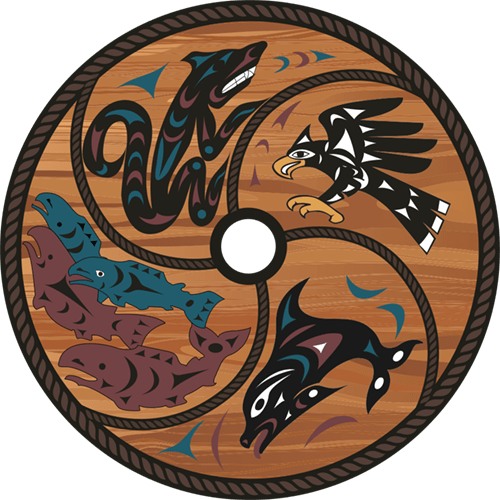Removal of Invasive Deer on SḰŦÁMEN to Continue in Fall 2024
Last year, property owners voted to move forward with the eradication of all fallow deer on Sidney Island. Eradication of fallow deer on Sidney Island will continue this fall.
This permanent elimination of the fallow deer on Sidney Island is a last resort effort to stop the devastating impact they’ve caused the delicate ecosystem.
Fallow deer are an invasive species introduced in the area by Europeans in the 1900s. The deer indiscriminately eat the island’s vegetation and have left the island devoid of medicines and food bulbs which are vital to the health of the unique ecosystem of Sidney Island. Fallow deer have effectively created an inhospitable environment for migratory birds and native black-tail deer. In the words of W̱SÁNEĆ Leadership Council Representative and Tsawout Nation Hereditary Chief Eric Pelkey:
All of the underbrush out in Sydney Island has been cleared because of a fallow deer. Nothing has a chance to grow. The only thing that’s there now is the mature trees and things like that. And all the young plants, and even the young trees don’t have a chance to grow. All of our plants and medicines that we used to harvest there are all gone and all of the undergrowth is gone.
Through the Sidney Island Ecological Restoration Project, the W̱SÁNEĆ community has been working alongside Parks Canada, Pauquachin First Nation, the Province of BC, the Sidney Island community, and Islands Trust Conservancy to replant “natural food bulbs and medicinal plants inside deer-safe enclosures.” Sidney Islanders have also removed over 15,000 fallow deer over the last 30 years.
The SḰŦÁMEN QENÁȽ,ENEȻ SĆȺ (the Sidney Island Ecological Restoration Project) also includes a hunting program that provides an annual period of exclusive hunting access to First Nations people every year. W̱SÁNEĆ senior hunters such as Carl Olsen used this period as an opportunity “to teach W̱SÁNEĆ youth to hunt in a way that aligns with W̱SÁNEĆ tradition and culture,” while reducing the fallow deer population.
Kate Humble, Superintendent of Gulf Islands NPR, shared that “Parks Canada is committed to working together with Indigenous Nations, as well as local communities and other interest holders to ensure the long-term health of the Coastal Douglas-fir ecosystem within Gulf Islands National Park Reserve.”
“Forest ecosystems are important, and Sidney Island is home to a globally-unique Coastal Douglas-fir ecosystem, which can only be found along the southern coast of British Columbia and parts of Washington and Oregon.”
“Because European fallow deer compete with native black-tailed deer, and eat native plants, they prevent local Indigenous harvesters from accessing traditional foods and medicines. The eradication of fallow deer is one step towards healing some of the ecological impacts resulting from colonization, and will be paired with active repopulation of native food and medicine plants.” The process will move forward in the Fall or Winter of 2023 in partnership with W̱SÁNEĆ knowledge holders from the W̱SÁNEĆ Leadership Council’s Archeological and Environmental Committees and other project partners to ensure we’re protecting important ecological and cultural features.
Humble shared that “[p]roject partners are working together to finalize an operational plan and complete a Detailed Impact Assessment prior to beginning the operation.” Additionally, project partners will work together to “remove invasive plants and re-plant native and culturally-significant plants, including foods and medicines.”
While the elimination of the fallow deer is grievous in many ways, it is a necessary step towards preserving W̱SÁNEĆ culture. In the words of W̱SÁNEĆ Leadership Council Director of Operations Gord Elliott, “I want to emphasize that although it is sad, it is necessary to remove the fallow deer to restore the SḰŦÁMEN ecosystem. By returning the island to its natural state before the introduction of fallow deer by colonizers, we can help natural foods and medicines thrive once more. This will ensure that the natural Black Tail deer population and our traditional practices can continue for generations to come.”










